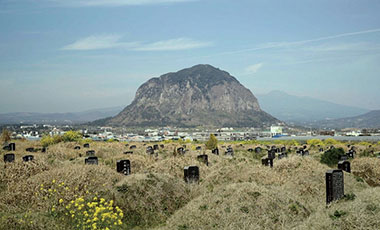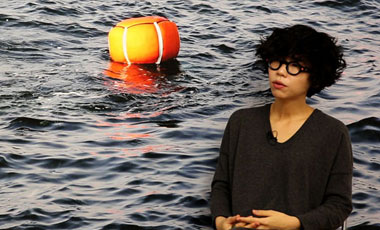The Korea Artist Prize is the representative annual award for the most promising Korean artists. Established in 2012, the award is co-organized by the National Museum of Modern and Contemporary Art (MMCA) and the SBS Culture Foundation for promoting the quality of Korean contemporary art culture and supporting talented artists. The Korea Artist Prize exhibition (September 13, 2017–February 18, 2018), held at MMCA Seoul, features artworks of its four finalists: Bek Hyunjin, Kelvin Kyungkun Park, Song Sanghee, and Sunny Kim. They created new projects for the exhibition, and based on the outcomes, a final winner will be selected and announced on Wednesday, January 23, 2018 as the 2017 Artist of the Year. Previous winning artists include Moon Kyungwon and Jeon Joonho (2012), Kong Sung-Hun (2013), Noh Suntag (2014), Inhwan Oh (2015), and Mixrice (Cho Ji Eun and Yang Chul Mo) (2016).
Bek Hyunjin
Bek Hyunjin (b. 1972) is known as an all-round artist who experiments with various fields including music, performance, literature, and fine art. In this exhibition, Bek has built a massive room titled UnemploymentBankruptcyDivorceDebtSuicide Rest Stop, which turns into a refuge, a rest area, and a place for meditation. These are pathological phenomena that occur like dominoes throughout Korean society, and all of these horrible, sad, and lonesome conditions are shared as our common stories. Huge paintings by Bek are also hung on the high walls of the room.
The anonymous portraits that until recently often appeared among Bek’s paintings originated from the desolate atmosphere of ordinary people’s lives. Bek paints endlessly as he observed the unstable condition of people living in an uncertain, incomplete world. The vivid colors, sounds, and gestures compete with one another, creating strange and intricate scenes.
Kelvin Kyungkun Park
Kelvin Kyungkun Park (b. 1978) mainly works in film and video, exploring historical archetypes and myths of modern and contemporary Korean history and uncovering a reverse side of the essence of the era. Park’s new work Mirror Organs: Play of Metonymy has a crowd of robots with rifles moving uniformly as light and colors respond to their motions. This exhibition asks powerful questions about the people who become a collective and are alienated within a system.
As he recalls his experiences of subordination to the army and to “modernization,” Park makes an in-depth exploration of the “site” where the archetype of today’s Korean man has grown. In the 14-meter-high exhibition venue, robots move in sync while the light and colors in the room react to each movement.
Song Sanghee
Song Sanghee (b. 1970) comforts the soundless death of one who owns absolutely nothing. In her works, the artist recalls those who have been excluded by symbolic violence, as well as the nameless, through multimedia narrative that incorporates music, video, drawing, text, and performance.
Song presents the 3-channel video installation Come Back Alive Baby that deals with relations between the end and the formation of things, based on the tragic hero folktale of a baby commander. The video reveals variations of a new life force rising even from devastating situations, such as one in which individuals are sacrificed for the stability of a country or a group. On the opposite side is This is the way the world ends Not with a bang but a whimper, created with a collection of countless explosion images.
Sunny Kim
Sunny Kim (b. 1969) collects the images of girls in uniform from her limited childhood memories in Korea and attempts to realize the unachievable perfect image. She does this through an acutely self-conscious method of appropriation and elimination, by juxtaposing traditional embroidery and other conventional images while also creating landscapes where the girls in uniform are absent.
In Kim’s installation Leap in the Dark, paintings, video, and objects are synchronized in three integrated spaces to generate unfamiliar images and memories, thereby creating a living environment. She draws upon the psychological domain regarding underlying memories and what is forgotten, bringing them into a real space.
※ This content was originally published on the Korea Artist Prize website (http://koreaartistprize.org).




